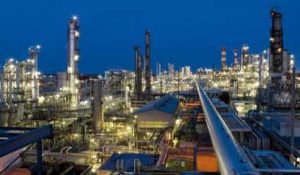
Country intelligence report: Iran
Often overlooked due to the sanctions in place on the country, Iran has vast hydrocarbon reserves and is the world’s second-largest holder of natural gas reserves with 33.8 tcm in situ at the end of 2013. With nuclear negotiations on the table that are poised to be accepted, the Iranian potential to contribute to the world oil and gas supply, with access to all markets, is a very real possibility.

Often overlooked due to the sanctions in place on the country, Iran has vast hydrocarbon reserves and is the world’s second-largest holder of natural gas reserves with 33.8 tcm in situ at the end of 2013. With nuclear negotiations on the table that are poised to be accepted, the Iranian potential to contribute to the world oil and gas supply, with access to all markets, is a very real possibility.
Basic Facts:
Quick Figures: All figures provided by the U.S. Energy Information Administration
– Iran holds the world’s fourth-largest proved oil reserves and the world’s second-largest natural gas reserves.
– Sanctions placed on Iran by the U.S. and the EU impeded the country’s ability to sell oil, resulting in a 1 million barrels of oil per day (bopd) decrease in crude oil and condensate exports in 2012 compared with the previous year.
– A lifting of said sanctions could lead to an extra million bopd on the world markets, and more oil added to the world supply glut.
– Production has varied greatly for the country. It was more than 6.0 million bopd in 1977. Since the 1979 revolution, however, a combination of war, limited investment, sanctions, and a high rate of natural decline of Iran’s mature oil fields has prevented a return to such production levels.
– Iran has the potential to reach production rates from the 1970s again if sanctions are lifted and if investments into infrastructure are made.
Hydrocarbons: All figures provided by the BP Statistical Review
Oil reserves at end of 2013: 152 billion barrels of oil
Oil production in 2013: 3.5 million bopd
Natural gas reserves at end of 2013: 33.8 tcm
Natural gas production in 2013: 166 bcm
Major companies working in the country:
- National Iranian Oil Company (NIOC)
- National Iranian Gas Company (NIGC)
- National Iranian Petrochemical Company (NPC)
- Petronas
- PetroPars
- NaftIran
Oil companies Iran would like back in the country after sanctions:
- Total
- Shell
- ENI
- Statoil
- BP
- Exxon Mobil
- ConocoPhillips
Major Projects:
– South Pars gasfield: One of the largest independent gas reservoirs in the world, which is situated on the territorial border between Iran and Qatar in the Persian Gulf.
This gas field covers an area of 9,700 square kilometers, of which 3,700 square kilometers is under Iran’s control. The Iranian portion is estimated to contain some 14 tcm of gas reserves and some 18 billion barrels of gas condensates. This amounts to roughly 7.5% of the world gas reserves and approximately half of Iran’s gas reserves. The gasfield is currently in Phase 12 of development. The 12th phase can produce 80 million cubic meters of gas and 120,000 barrels of gas condensates on a daily basis, bringing the country $17.5 million in revenue every day.
– Development of the Kish gasfield, the fifth-largest field in the world. The Iranian Ministry of Petroleum for Planning and Supervision on Hydrocarbon Reserves selected Petroleum Engineering and Development Company (PEDEC) in October 2011 to develop the field.
PEDEC will implement a three-phase development process at a cost of some $2.2 billion. The first phase is expected to be operational by November 2015.
– Edited by Oil & Gas Engineering
